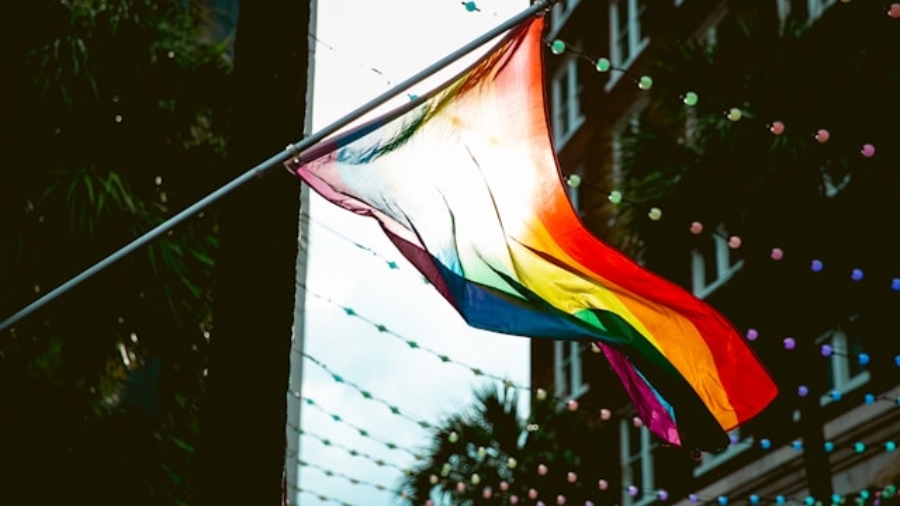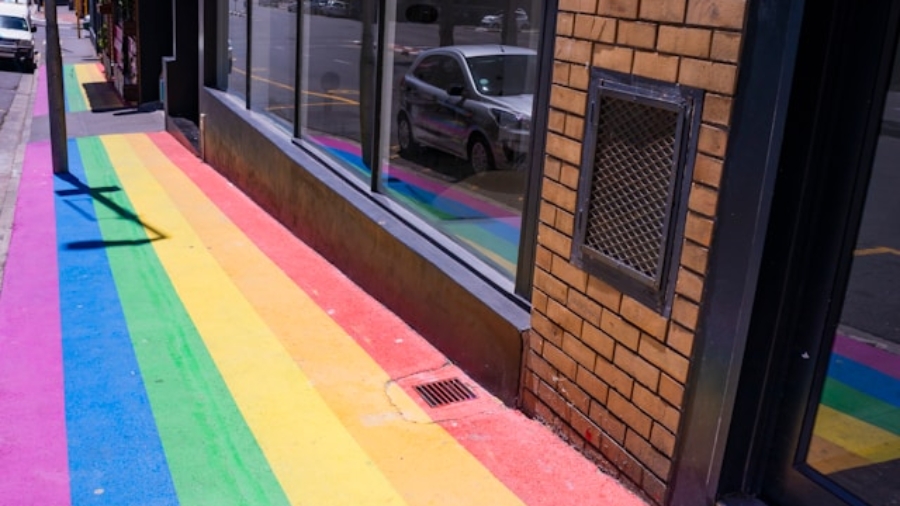Can Faith and Identity Truly Coexist?
Imagine standing at the intersection of two roads that seem to pull in opposite directions. One path represents your deepest spiritual beliefs, the traditions you grew up with, the rituals that shaped your understanding of the divine. The other represents your authentic self—who you love, who you are at your core. For millions of LGBTQ Catholics worldwide, this isn’t just a metaphor. It’s their daily reality.
The relationship between LGBTQ and Catholicism has long been marked by tension, yet beneath the surface of doctrinal debates lies a powerful story of resilience, faith, and transformation. Can these two identities truly coexist, or must one be sacrificed for the other?
Understanding the Official Catholic Teaching
Before exploring the lived experiences of LGBTQ Catholics, it’s essential to understand what the Church officially teaches. The Catholic Church maintains a nuanced position that distinguishes between orientation and behavior.
According to the Catechism of the Catholic Church, same-sex attraction itself is not considered sinful. However, the Church teaches that homosexual acts are “intrinsically disordered” and contrary to natural law. The Catechism emphasizes that individuals with homosexual tendencies “must be accepted with respect, compassion and sensitivity,” and that “every sign of unjust discrimination in their regard should be avoided.”
This teaching creates what many describe as an impossible standard: LGBTQ Catholics are welcomed into the faith community but are called to lifelong celibacy. The Church does not recognize same-sex marriages and teaches that the sacrament of marriage can only exist between a man and a woman.
Recent Developments Under Pope Francis
Pope Francis has brought a notably different tone to discussions about LGBTQ issues. His famous 2013 comment, “Who am I to judge?” when asked about gay priests, sent ripples through the Catholic world. In December 2023, the Vatican authorized priests to bless same-sex couples under certain conditions, though it carefully distinguished these blessings from the sacrament of marriage.
The Lived Reality: Stories from LGBTQ Catholics
Statistics tell one story, but personal experiences reveal another. Research from The Williams Institute shows that nearly two-thirds of LGBTQ people raised Christian have left their faith. Yet many stay, finding ways to integrate both identities despite the challenges.
Moments of Grace and Acceptance
Sonia Natalia Mendoza shared a powerful moment with Outreach magazine: “I told my parish priest, ‘I am queer, and the world believes I am sin, and who I love is sin.’ My priest heard my story, got up from his chair, and asked if he could hug me.” That embrace marked the beginning of healing from religious trauma—proof that compassion can flourish even within institutional constraints.
These stories aren’t isolated incidents. Many LGBTQ Catholics describe finding welcoming communities, supportive priests, and moments where their faith and identity don’t feel like competing forces but complementary aspects of who they are.
The Struggle for Integration
Not all experiences are positive. Maxwell Kuzma, a transgender Catholic from Ohio, wrote about the pain of seeing the Vatican’s document “Dignitas Infinita” repeatedly use the term “gender ideology” without consulting actual transgender people. “It was disheartening to see that phrase used so often, which suggested to me it is likely that no transgender people were consulted,” he reflected.
The disconnect between official church teaching and lived experience creates what theologians call “cognitive dissonance”—the psychological stress of holding two contradictory beliefs simultaneously.
Communities Building Bridges
Rather than abandoning their faith, many LGBTQ Catholics have created supportive communities that affirm both their spiritual and personal identities.
DignityUSA and Grassroots Organizations
Founded in 1969, DignityUSA represents one of the longest-running organizations advocating for LGBTQ Catholics. The group contends that “homosexuality is a natural variation on the use of sex” and that LGBTQ individuals possess the same natural right to “responsible and fulfilling” sexual intimacy as everyone else.
Local chapters across the United States hold inclusive Masses where LGBTQ Catholics can worship without fear of judgment. These gatherings often attract those who feel alienated from traditional parishes but aren’t ready to leave the faith entirely.
Parish-Level Welcoming Initiatives
The experience of LGBTQ Catholics varies dramatically depending on their local parish. Some dioceses and parishes actively reach out to LGBTQ members, offering as full a welcome as possible within the constraints of official teaching. Others have denied membership to LGBTQ individuals and families, or dismissed employees who entered same-sex marriages.
Organizations like Outreach and ministries led by figures such as Father James Martin, S.J., work to create dialogue between LGBTQ Catholics and church leadership, emphasizing pastoral care and human dignity.
Theological Perspectives: Can Doctrine Evolve?
One of the most compelling questions in this conversation is whether Catholic teaching on sexuality can change. The Church has evolved its positions on many issues throughout history—from slavery to usury to religious freedom.
The Case for Development of Doctrine
Catholic theologians have developed what’s called a “queer theology of liberation,” which argues that LGBTQ Catholics’ experiences of reconciling faith and identity builds resilient faith communities. This perspective suggests that rather than undermining the Gospel, queer believers “embody the heart of Christian faith and challenge others to do the same.”
Father Timothy Radcliffe, a spiritual assistant at the Synod on Synodality, has written that same-sex desires, like all desires, are “God-given” and need to be “educated” rather than denied, a perspective that sparked both hope and controversy.
The Institutional Resistance
However, official church documents continue to reinforce traditional teaching. The 1986 “Letter to the Bishops of the Catholic Church on the Pastoral Care of Homosexual Persons” argued that under no circumstances could bishops or parishes support individuals or groups that contradicted church teaching on homosexuality.
Recent Vatican documents have maintained this position while emphasizing the need for pastoral sensitivity and respect for human dignity.
Practical Considerations: What Does Coexistence Look Like?
| Aspect | For LGBTQ Catholics Living Chastely | For LGBTQ Catholics in Relationships |
|---|---|---|
| Sacramental Participation | Full participation in all sacraments | May attend Mass but cannot receive Communion |
| Church Roles | Can serve as lectors, godparents, ministers | Typically cannot serve in formal church roles |
| Recognition | Considered members in good standing | Welcomed but relationships not recognized |
| Support Resources | Organizations like Courage International | Groups like DignityUSA and Fortunate Families |
This table illustrates the practical reality: coexistence is possible, but its nature depends significantly on how one chooses to live out their identity.
The Role of Allies: Families and Supporters
The conversation about LGBTQ and Catholicism isn’t limited to LGBTQ individuals themselves. Parents, siblings, and friends play crucial roles in creating welcoming environments.
Organizations like Fortunate Families support Catholic parents of LGBTQ children, helping them navigate the tension between church teaching and love for their children. Many parents report that watching their LGBTQ children struggle with faith communities has transformed their own understanding of what it means to be Catholic.
Chris Cappiello, president of Dignity’s San Fernando Valley chapter, noted that Pope Francis’s approval of blessings for same-sex couples represents “progress, not just for Catholics in same-sex relationships themselves, but for family members, particularly parents who may be experiencing this terrible tension.”
The Path Forward: Synodality and Dialogue
The Catholic Church’s ongoing Synod on Synodality has created unprecedented opportunities for dialogue about LGBTQ issues, even as official discussions avoid explicit focus on the topic.
In October 2024, LGBTQ Catholics shared their stories at a panel near the Vatican. Juan Carlos Cruz, a survivor advocate, expressed that he had learned “faith and identity are not mutually exclusive, and that God’s love is wide enough to encompass every part of me.”
This synodal process emphasizes listening and walking together—principles that could potentially transform how the Church engages with LGBTQ members, even if doctrine doesn’t immediately change.
Key Takeaways for Understanding LGBTQ and Catholicism
The question of whether faith and identity can truly coexist doesn’t have a simple yes or no answer. Instead, we find:
- Official teaching remains unchanged, but pastoral approaches vary widely
- Personal experiences differ dramatically based on local communities and individual circumstances
- Organizations and support networks provide crucial spaces for LGBTQ Catholics to explore both identities
- Theological dialogue continues to develop new perspectives on sexuality and faith
- Incremental changes, like blessings for same-sex couples, signal evolving pastoral practice
- Family and ally support plays a vital role in creating welcoming environments
The reality is that thousands of LGBTQ Catholics have found ways to integrate both identities. Some do so by remaining celibate and fully participating in church life. Others form relationships and create community in spaces that affirm both their faith and their loves. Still others leave and return multiple times throughout their lives, navigating an ongoing journey of discernment.
Conclusion: Living in the Tension
Can faith and identity truly coexist for LGBTQ Catholics? The answer depends on what we mean by “coexist.” If we’re asking whether someone can be both LGBTQ and a baptized, practicing Catholic, the answer is unequivocally yes. If we’re asking whether the institutional Church fully affirms LGBTQ relationships and identities, the answer is not yet.
But perhaps the more important question isn’t whether coexistence is theoretically possible, but how it’s actually happening in parishes, homes, and hearts around the world. The stories of LGBTQ Catholics who refuse to choose between their faith and their identity are stories of profound courage and deep spirituality.
As one LGBTQ Catholic attending an affirming retreat shared with Outreach: “I felt safe, heard, and loved fully as a LGBTQ Catholic for one of the first times in my life… These statements were an expression of just how loved we were because of our identities in our community.”
That experience of being loved in wholeness—not despite being LGBTQ or despite being Catholic, but as someone whose identity encompasses both—points toward what coexistence can look like at its best.
Are you navigating the intersection of LGBTQ identity and Catholic faith? Share your story in the comments below, or explore resources from organizations like DignityUSA, Outreach, and New Ways Ministry to connect with supportive communities. Remember: you don’t have to walk this path alone.




